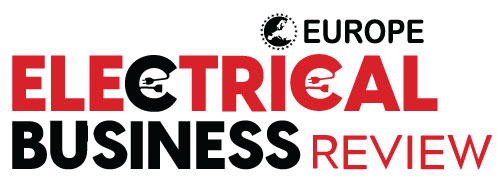Thank you for Subscribing to Electrical Business Review Weekly Brief
I agree We use cookies on this website to enhance your user experience. By clicking any link on this page you are giving your consent for us to set cookies. More info
The Evolution of Electrical Enclosures: Innovations for Modern Applications
Electrical enclosures have witnessed remarkable advancements, evolving to meet the ever-changing demands of modern applications.

By
Electrical Business Review | Saturday, August 10, 2024
Stay ahead of the industry with exclusive feature stories on the top companies, expert insights and the latest news delivered straight to your inbox. Subscribe today.
The evolution of electrical enclosures has paved the way for improved protection, functionality, and adaptability in modern applications.
FREMONT, CA: Electrical enclosures have witnessed remarkable advancements, evolving to meet the ever-changing demands of modern applications. These enclosures protect electrical components, ensuring their reliability and longevity. This article explores the latest innovations in electrical enclosures, highlighting their enhanced functionality, versatility, and adaptability to meet the evolving needs of diverse industries.
Enhanced Protection and Durability: Modern electrical enclosures are designed with a focus on enhanced protection and durability. Enclosure manufacturers now utilize advanced materials, such as stainless steel or polycarbonate, that offer superior resistance to corrosion, impact, and harsh environmental conditions. These enclosures provide a robust shield against dust, moisture, UV radiation, and chemicals, ensuring the safety and integrity of electrical components in demanding industrial settings. With their enhanced protection features, modern enclosures are built to withstand the challenges of various industries, including manufacturing, oil and gas, transportation, and telecommunications.
Seamless Integration of Technology: Technology integration has revolutionized electrical enclosures, making them more adaptable to modern applications. Enclosures are now equipped with advanced features to accommodate the latest technological advancements, such as IoT connectivity, wireless communication, and remote monitoring. Smart enclosures enable real-time data collection, remote control, and predictive maintenance, enhancing operational efficiency and reducing downtime. These enclosures also provide connectivity options for power distribution, data centers, and renewable energy systems, facilitating seamless integration into smart grids and intelligent infrastructure.
Modularity and Flexibility: Modularity and flexibility have become key considerations in the design of modern electrical enclosures. Enclosure systems now offer modular components, allowing easy customization and adaptation to specific project requirements. Modular enclosures can be expanded, reconfigured, or combined, offering versatility for future expansions or changes in equipment. Additionally, innovative mounting options, such as adjustable rails and brackets, provide flexibility in organizing and securing electrical components. This modular and flexible approach simplifies installation and maintenance, optimizes space utilization, and reduces overall costs.
Efficient Cooling and Thermal Management: Heat dissipation and thermal management have become critical aspects of modern electrical enclosures. As electronic components increase power density, efficient cooling mechanisms are essential to prevent overheating and ensure optimal performance. Modern enclosures incorporate advanced cooling techniques, such as fan cooling, heat exchangers, or air-conditioning systems, to maintain stable operating temperatures. Some enclosures feature intelligent temperature and humidity control, leveraging sensors and smart algorithms to adjust cooling. These innovative cooling solutions enhance the reliability and lifespan of electrical components, particularly in high-temperature environments or applications with stringent thermal requirements.
Conclusion: The evolution of electrical enclosures has paved the way for improved protection, functionality, and adaptability in modern applications. With enhanced durability, seamless technology integration, modularity, and efficient cooling capabilities, these enclosures are equipped to meet the diverse needs of industries. By embracing these innovations, businesses can safeguard their electrical systems while optimizing performance and productivity.








